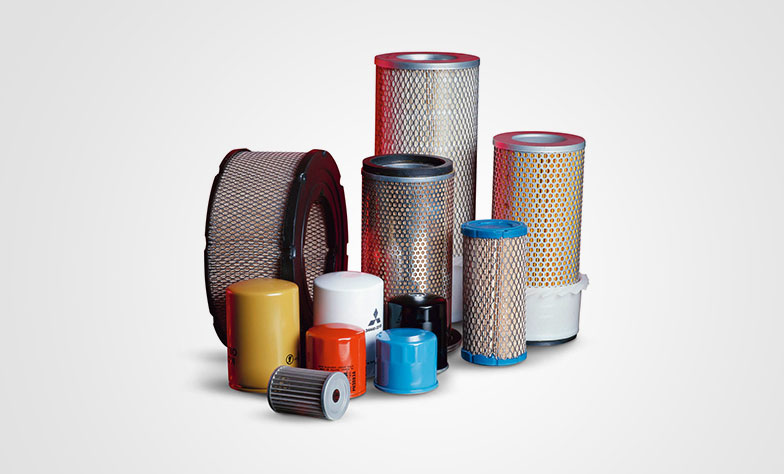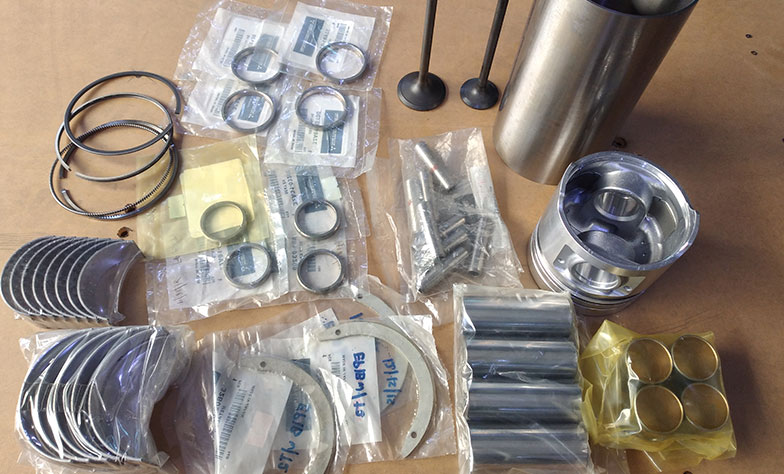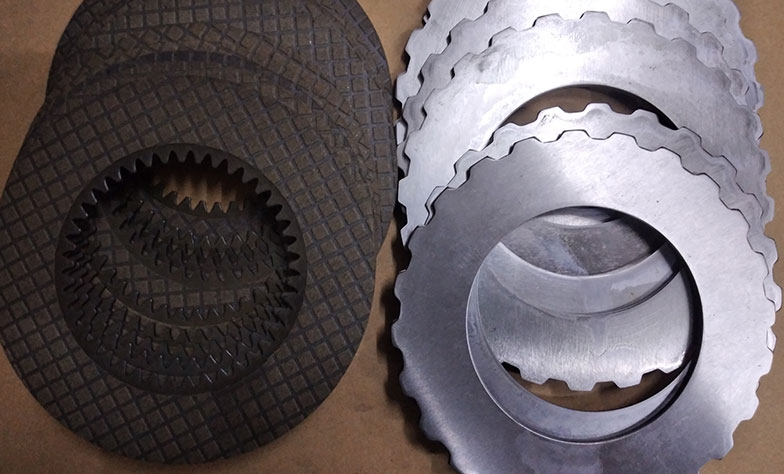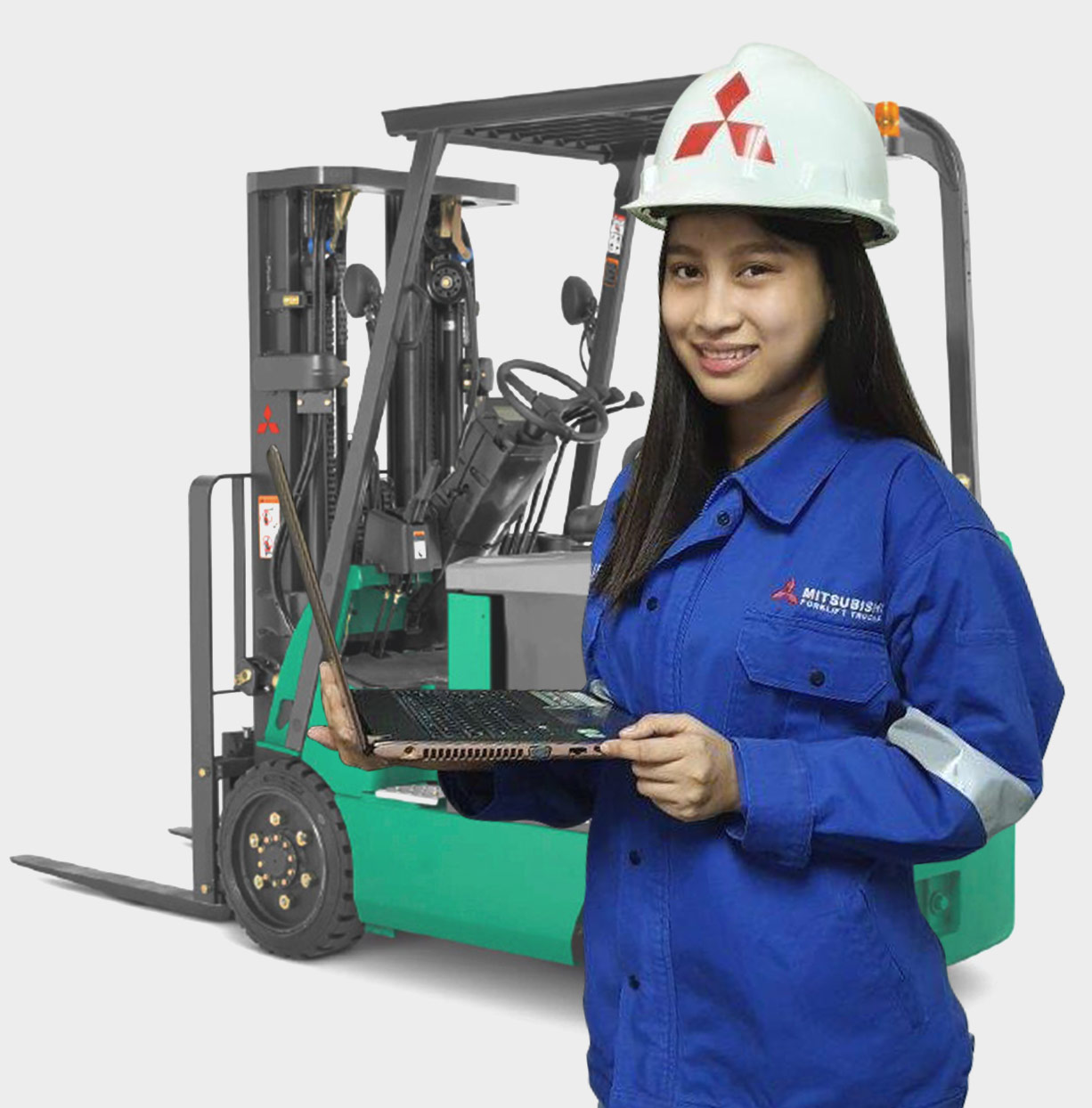The basic principle of filtration is to prevent the ingestion of foreign particles while at the same time allowing air or fluid flow.
The air filter allows air to flow into the engine to support combustion while at the same time, prevents dust and dirt from entering.
The oil filter works similarly by filtering out the contaminants in the fluid and avoid poor operability of the engine cooling or hydraulic system.
A fuel filter is a filter in the fuel line that screens out dirt and rust particles from the fuel, normally made into cartridges containing a filter paper. They are found in most internal combustion engines.
Hydraulic filters protect your hydraulic system components from damage due to contamination of oils or other hydraulic fluid in use caused by particles. Every minute, approximately one million particles larger than 1 micron (0.001 mm or 1 μm) enter a hydraulic system. These particles can cause damage to hydraulic system components because hydraulic oil is easily contaminated. Thus maintaining a good hydraulic filtration system will increase hydraulic component lifetime.

The Forklift Engine is a machine designed to convert chemical energy into mechanical energy. By burning fuel through internal combustion in a series of pressurized cylinders, the engine creates motion that mobilizes a vehicle. The principle governing a reciprocating internal combustion engine is that if a sizeable amount of energy fuel is put in a small enclosed cylinder or container and is ignited, it can produce an incredible amount of energy in gaseous state which tends to expand beyond the boundaries of that vessel. That produced energy can be put to use to push forward objects in a thrust. If properly harnessed, that tremendous energy can work well to drive your forklift truck away.
Internal combustion engines follow a four-stroke combustion cycle.Following stages form part of four strokes: Internal stroke, Compression stroke, combustion stroke and exhaust stroke. The main parts of an engine are as follows: head cylinder, cylinder block, intake valves, exhaust valves, pistons, piston rings, connecting rods, sparkplugs crankshaft, gaskets, and seals.
When the internal combustion cycle starts, the piston begins at the top. The intake valves open up and the piston moves down, enabling the engine to take in a cylinder filled with air and gasoline. This is an intake stroke in forklift internal combustion engine, when only a small drop of gasoline mixes with air to make it work. In the next step, the piston moves back up and compresses the air and fuel mixture. Compression takes place, which makes the upcoming explosion more powerful. Upon reaching the top of its stroke, the piston finds the spark plug emitting a spark, which in turn ignites the compressed and highly pressurized gasoline mixture. Ignition causes the gasoline in the cylinder to explode and the explosion releases energy, which forcibly drives the piston down.
When piston moves down and hits the bottom, the exhaust valve opens and let the exhaust go out of the tailpipe. This is where the four strokes end completing a cycle and the engine gets ready for the next cycle, taking the next charge of air and gasoline mix. In the engine, the linear motion of piston is transformed to rotational motion by the crankshaft. The rotational motion is necessary to allow the engine power translated to the wheels and rotate them.
The core of the engine is cylinder, in which the piston moves vertically up and down. The internal combustion for the stroke cycle explained, exemplifies a single cylinder. However, in most of the forklift trucks more than one cylinder works, where commonly used are four, six and eight cylinders, enabling the forklift truck to perform heavy-duty jobs. Hence, when more than one cylinder is put to use, they need to be arranged in a configuration for optimum output.
The usual arrangements for more than one cylinder are made in three ways; the inline, V or flat arrangement. These configurations offer specific advantages and disadvantages, while considering the intrinsic outputs of smoothness, cost effect and shape characteristics. Choosing between these plus and minuses determine which arrangement is to be used in which sort of forklift truck.
The spark plug signifies the next important part responsible for the combustion in internal combustion engines of the forklift trucks. The spark plug provides the necessary spark that ignites the air and fuel mixture for combustion to take place. The timing of spark plug to initiate a spark is of even more importance. The spark should be initiated only at the right time with ultimate precision, failing will cause functioning troubles in the engine’s performance. The ideal would be to ignite a spark when the whole mixture of air and gasoline is at the bottom of cylinder, fully compressed. Ignition at this stage will produce maximum thermal energy resulting in a stronger drive force.
After having utilized the energy required to put the forklift truck in motion, the residual waste is to be exhausted. This is where valves come into play. Intake and exhaust valves open and shut at required times to first let in the air gas mixture and to let the exhaust out. Valves remained closed during compression and combustion effectively sealing the combustion chamber.
Due to the internal combustion, the engine can experience extremely high temperatures while operating. This increase in temperature, which is regulated through the cooling system, utilizes hydraulics to effectively cool down the engine. The cooling system is mainly composed of radiators, water pumps, belts, thermostat and a series of hoses. The engine is also supported by a series of electrical and mechanical parts such as alternators, carburetors, starters and solenoids.
Similar to most mechanical parts and components, the engine experiences wear and damage over time. Scheduled maintenance, regular tune ups, and routine oil change can prevent subsequent damages. The following points are six signs of common forklift engine problems:
The engine problems are mostly avoided when maintained on a regular basis. But, over extensive use and age, they can be unavoidable.

The Forklift Transmission is a crucial part that enables the movement of the forklift. It is a component of the engine assembly which connects both the engine and the wheels, allowing them to rotate in sync with each other. When the engine operates at varying ranges of revolutions per minute (RPM), transmission provides the conformity between the engine rotation and the wheel rotation, keeping them in balance. The main job of a transmission system, whether manual or automatic, is to let the engine operate at narrow ranges of speed while at the same time providing a wider range of output speeds.
A transmission system essentially is of two types, manual transmission system and automatic transmission system. Despite the fact that many old vintage Forklift trucks have been operating on manual transmission systems, modern trucks usually rely on an automatic transmission, which adds up to the ease of operators and reduces the risk of any mishandling of materials. Where previously the operator of a forklift truck used to decide in which gear he should move the truck, an automatic transmission system had freed him/her off the worry. The primary visible difference between a manual and automatic transmission is an absence of clutch and a gear shift. The gear knob when put in drive performs all the operations of a manual transmission in an amazing way, all by itself. An automatic transmission, along with its torque converter, performs the same actions as a manual transmission coupled with the clutch.
Forklift transmissions are made up of various components; the planetary gear set, torque converter and computer sensors. The planetary gear set allows the forklift to shift gears, allowing it to move forward and reverse. In contrast with a manual system where different gear sets are locked and unlocked at different times for obtaining varying gear ratios, an automatic transmission system uses the same set of gears called planetary gear system to produce all the various gear ratios.
As the name suggests, the gears work like the planetary solar system, in that they are configured with the largest gear in the center with varying number of smaller gears rotating around it in an orbit-like fashion. It is almost the same size as a cantaloupe and is the only part responsible for creating all of the gear ratios which transmission can produce. All other parts facilitate the planetary gear set. A planetary gears system has three parts, the sun gear, the planet gears and the ring gear. Each of the components serve different roles at different times, any of them can be input, output or may remain stationary. The gear system is complete with input and output shafts for manual transmission forklifts.
Torque converter, a replacement of clutch in annual transmission systems, keeps the engine running despite the forklift being stationary. They are found in automatic transmissions and are composed of three parts: the stator, the pump, and the turbine. A torque converter is an example of fluid coupling, which lets the engine spin more or less independent of the transmission. This can be experienced when an automatic transmission forklift is made to halt near an obstacle, the torque converter provides less torque for engine and the forklift keeps creeping. A little pressure applied on the brake pedal is necessary to put the truck to a complete stop. The housing of torque converter is attached to engine flywheel with the help of bolts, allowing it to turn at a speed similar to that of the engine. The pump of a torque converter is one type of a centrifugal pump, which flings out the fluid with its spin. This fluid enters the turbine which is already connected to the transmission, causing it to spin and move the forklift truck.
Stator is present in the center of the torque converter. It redirects the fluid coming back from turbine before it contacts the pump again. If the fluid is not stopped and is allowed to hit the pump, the engine will slow down and the power will go waste. This helps increasing the efficiency of torque in a big way. The redirection of fluid in an opposite direction is due to the way stator blades/ fins are designed. Stator has a clutch inside it, which only allows it to spin one-way, i.e in the direction opposite to the flow of fluid. During motion, transmission fluid is forced into the stator, through the turbine, by the pressure from the pump. When the forklift is not mobile, the turbine would slow down because less fluid enters. Then, the stator would get locked until the turbine speed returns. Computer sensors monitor the forklift speed, engine load, pedal position, etc. to conduct the process of gear shifting.
Over time and extensive use, transmissions can be problematic. There are various indications of a transmission that needs either to be repaired or replaced.
Forklift transmission is an essential component of the forklift’s drivability. If the transmission is having issues, it should be checked immediately by a professional mechanic. Some issues can be easy to fix such as transmission fluid leaks or lack of fluid. On the other hand, many issues are irreparable, requiring a replacement part.

